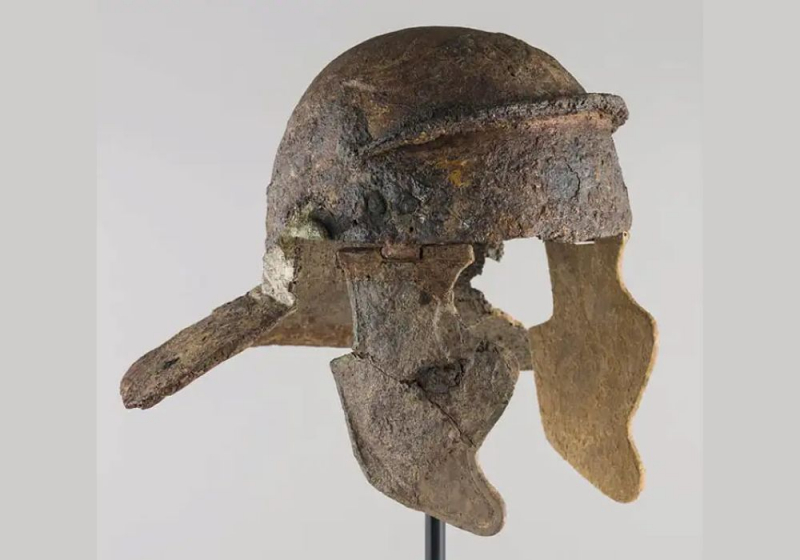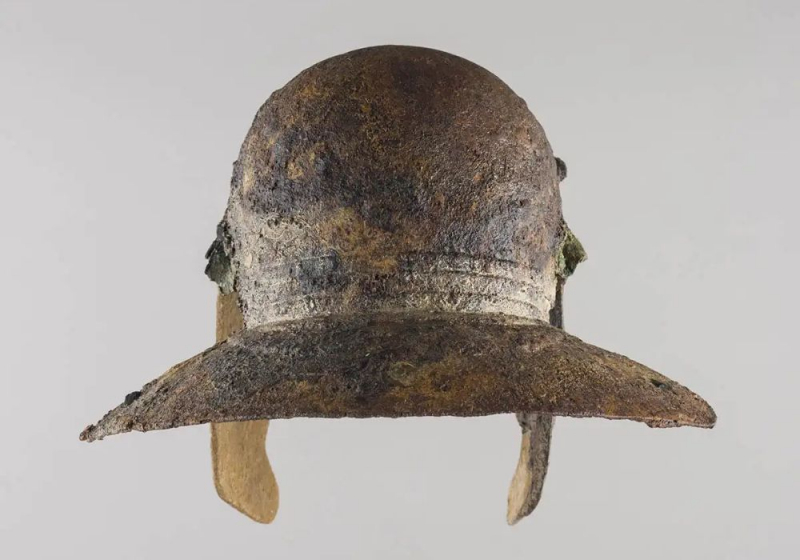Imperial Gallic: The Iconic Roman Helmet
Following Caesar's Gallic Wars (58–50 BCE), Roman army men began wearing iron helmets on a large scale. Rome now had unrestricted access to the area's Celtic Armorers as a result of its conquest of Gaul. As a result, the Imperial kind of Roman helmet—which is further divided into Imperial Gallic and Imperial Italic—was created. The Late Republic witnessed the first appearance of the Imperial Gallic Roman helmet, which was in use until the third century CE. It was initially a cross between the Agen and Port styles, incorporating elements from each.
The bowl is circular, has a flat top, and has straight sides in the Imperial Gallic design. Additionally, they have noticeable cheek guards made of iron. The semi-circular embossing on its neck guard, which acts to strengthen rigidity and creates a suspension ring on the lower surface, was inspired by the Agen design. It borrowed its two raised occipital ridges, which are located above the neck guard's outer flange and the embossed "eyebrows" on the front of the helmet, from the Port style. Imperial Gallic Roman helmets also have a substantial, distinctively designed reinforcing peal at the front of the helmet. Some helmets additionally have two iron bars that are riveted crosswise on the top, serving as a type of reinforcement.











